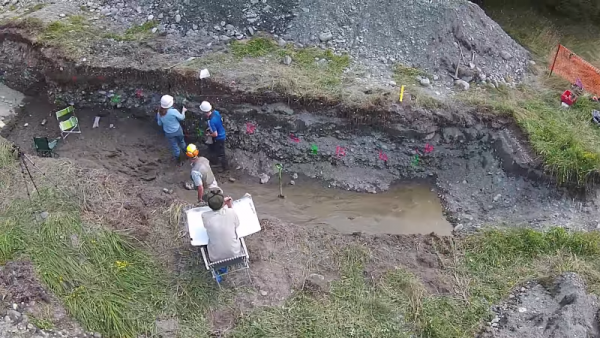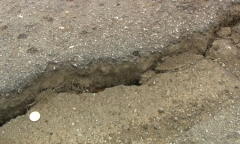By KM Diaz, | May 18, 2017

The water in the Alpine Fault reached 100 degrees Celsius with a depth of 630 meters. (YouTube)
Upon drilling the Alpine Fault, New Zealand quake scientists were able to find water beneath the area. According to them, the water is much hotter than expected, and could provide a new source of energy for the South Pacific nation.
The finding is significant since geothermal energy is commonly found near a volcano, but there are no volcanoes in the area where scientists drilled. The study was published in the journal Nature, and led by Professor Rupert Sutherland from the Victoria University of Wellington.
Like Us on Facebook
According to Sutherland, the real intention of their research is to install monitoring devices and collect rock cores rather than measuring the water temperature. However, their unexpected findings of the water beneath the area could be economically significant for New Zealand, which is also a new paradigm.
Their first theory about the unexpected of water is that, previous earthquakes shifted hot rocks upward to the mountains along the fault line. Second, the shaking splits the rocks to allow the snow and rainwater to quickly melt within the hot interior of the mountains to direct the heat under the valleys.
The water in the Alpine Fault reached 100 degrees Celsius with a depth of 630 meters. Water becomes hotter with depth, though under normal circumstances, it does not reach such temperature until more than 3 kilometers underground. Furthermore, the boiling point on the surface of the Earth is 100 Celsius, but the water does not usually boil underground since it remains under pressure, similar to a liquid inside a pressure cooker.
Dave Craw, who was not involved in the study and a professor at the New Zealand's University of Otago, said that they have also drilled water in San Andreas Fault in California, but its temperature gradient is much lower compared to the water found in Alpine Fault. This is a spectacular thermal anomaly around the fault line since there is no active volcanic activity.
Meanwhile, the Alpine Fault is one of the most active faults in the world. It produces large earthquakes every 300 years, and scientists predict that there is a one-third chance it could rupture and create an earthquake again after few decades.
-
Use of Coronavirus Pandemic Drones Raises Privacy Concerns: Drones Spread Fear, Local Officials Say

-
Coronavirus Hampers The Delivery Of Lockheed Martin F-35 Stealth Fighters For 2020

-
Instagram Speeds Up Plans to Add Account Memorialization Feature Due to COVID-19 Deaths

-
NASA: Perseverance Plans to Bring 'Mars Rock' to Earth in 2031

-
600 Dead And 3,000 In The Hospital as Iranians Believed Drinking High-Concentrations of Alcohol Can Cure The Coronavirus

-
600 Dead And 3,000 In The Hospital as Iranians Believed Drinking High-Concentrations of Alcohol Can Cure The Coronavirus

-
COVID-19: Doctors, Nurses Use Virtual Reality to Learn New Skills in Treating Coronavirus Patients











